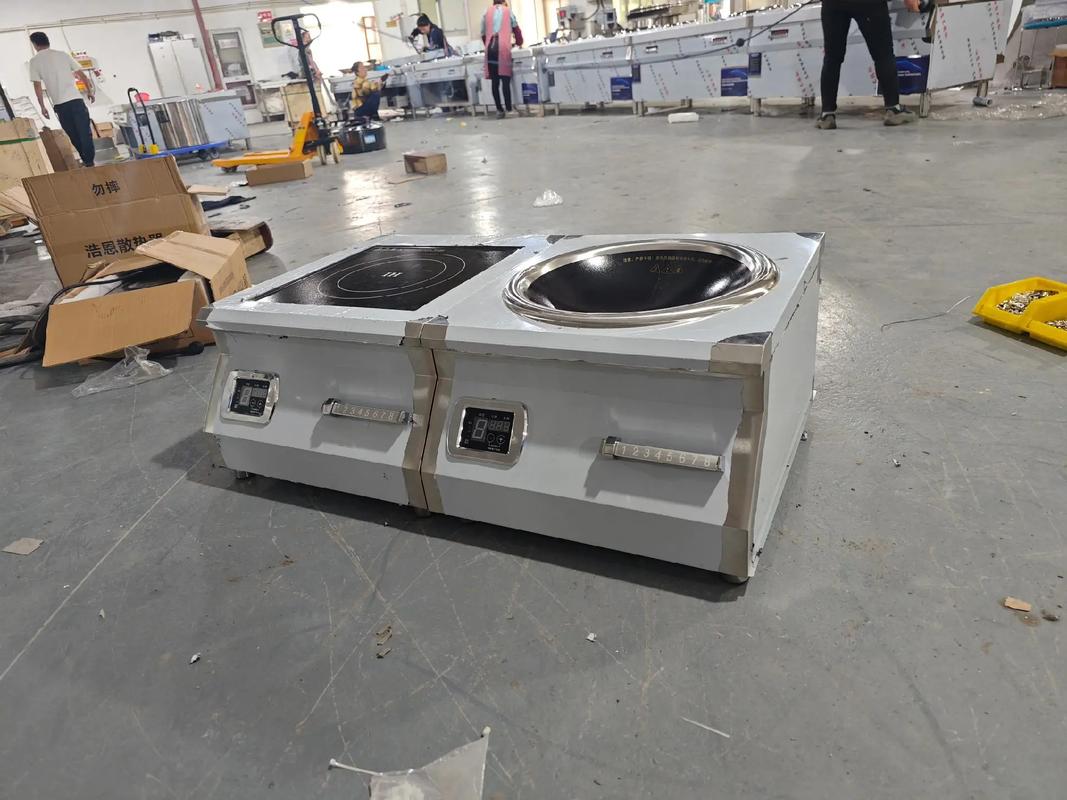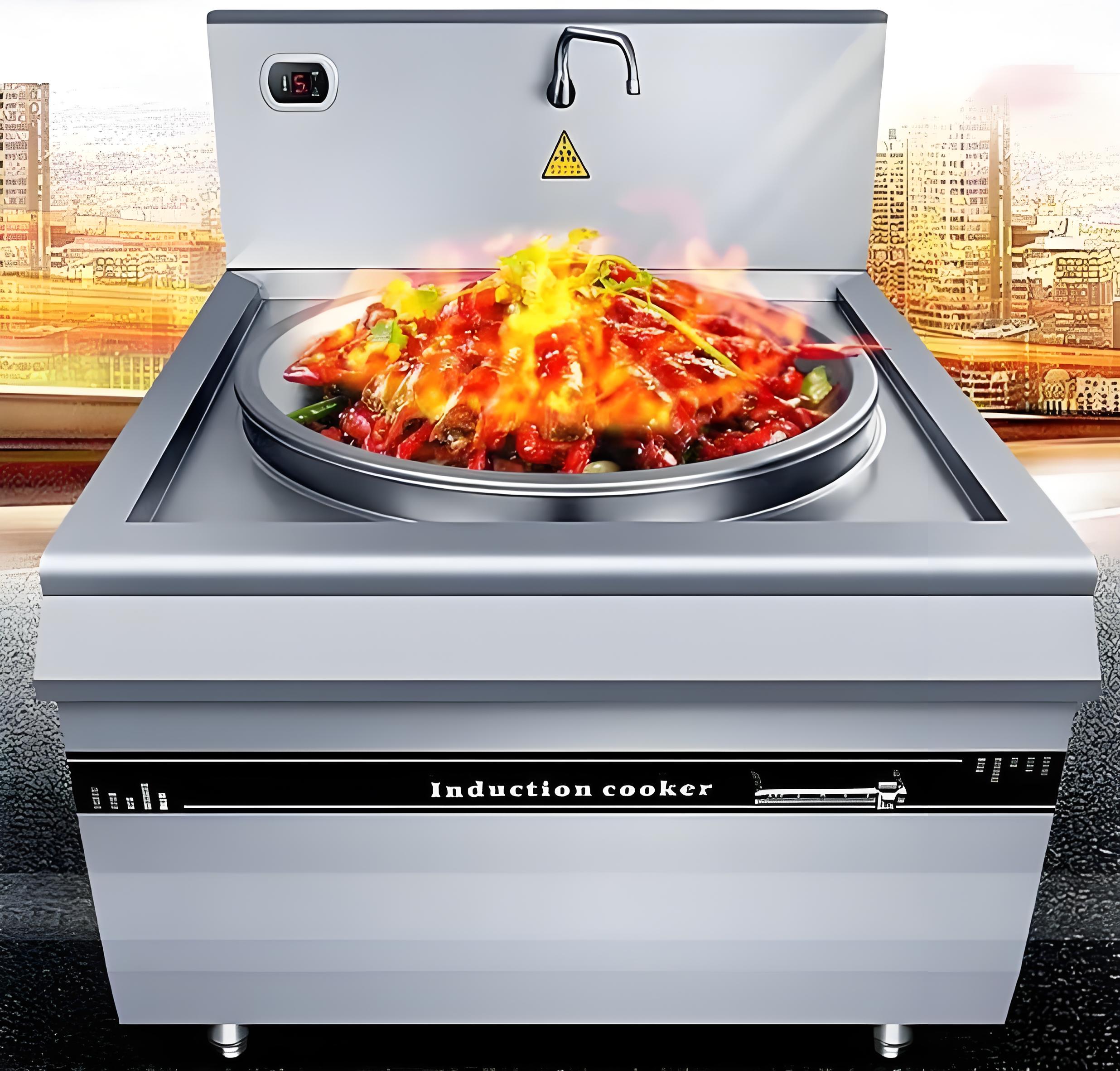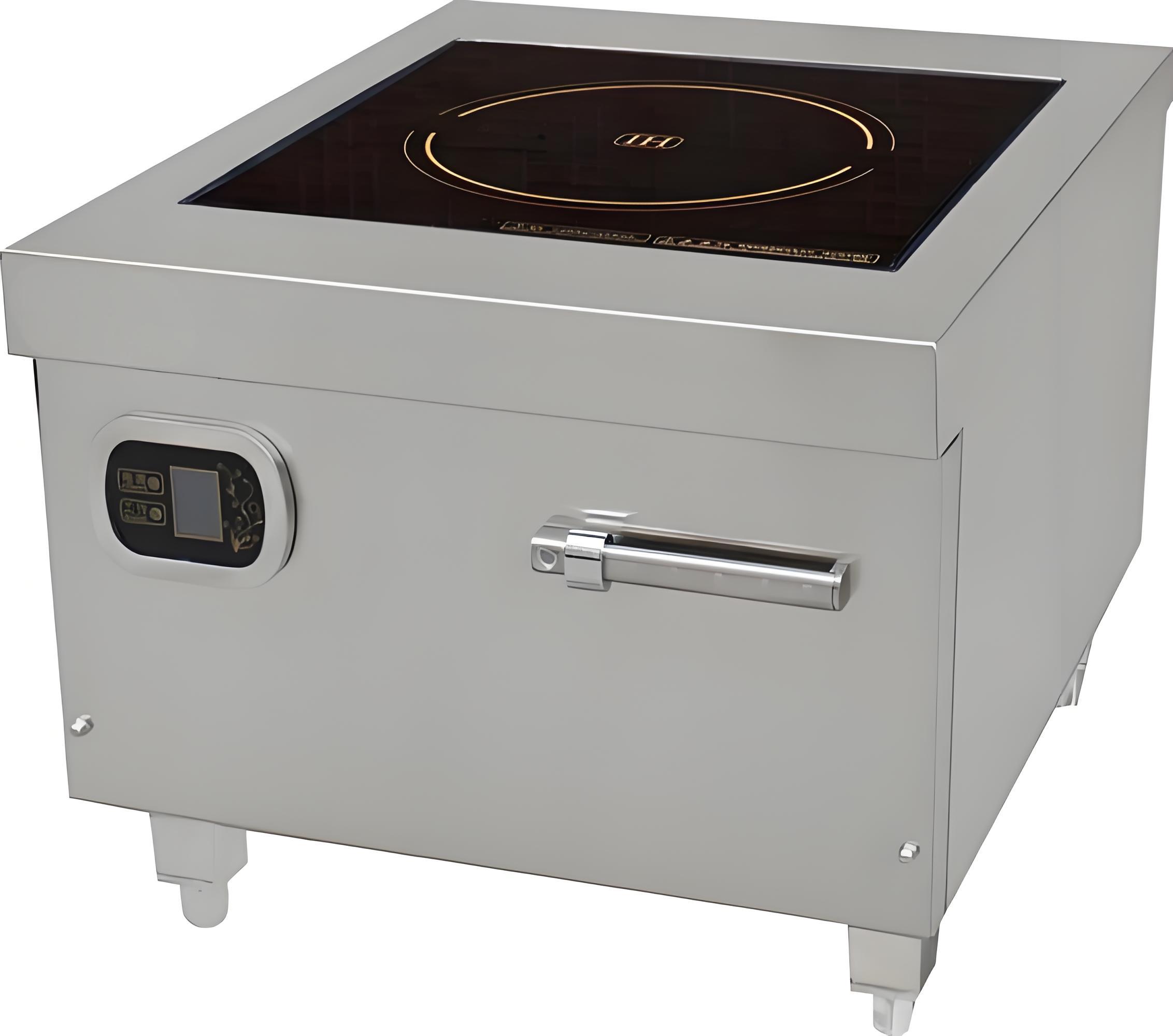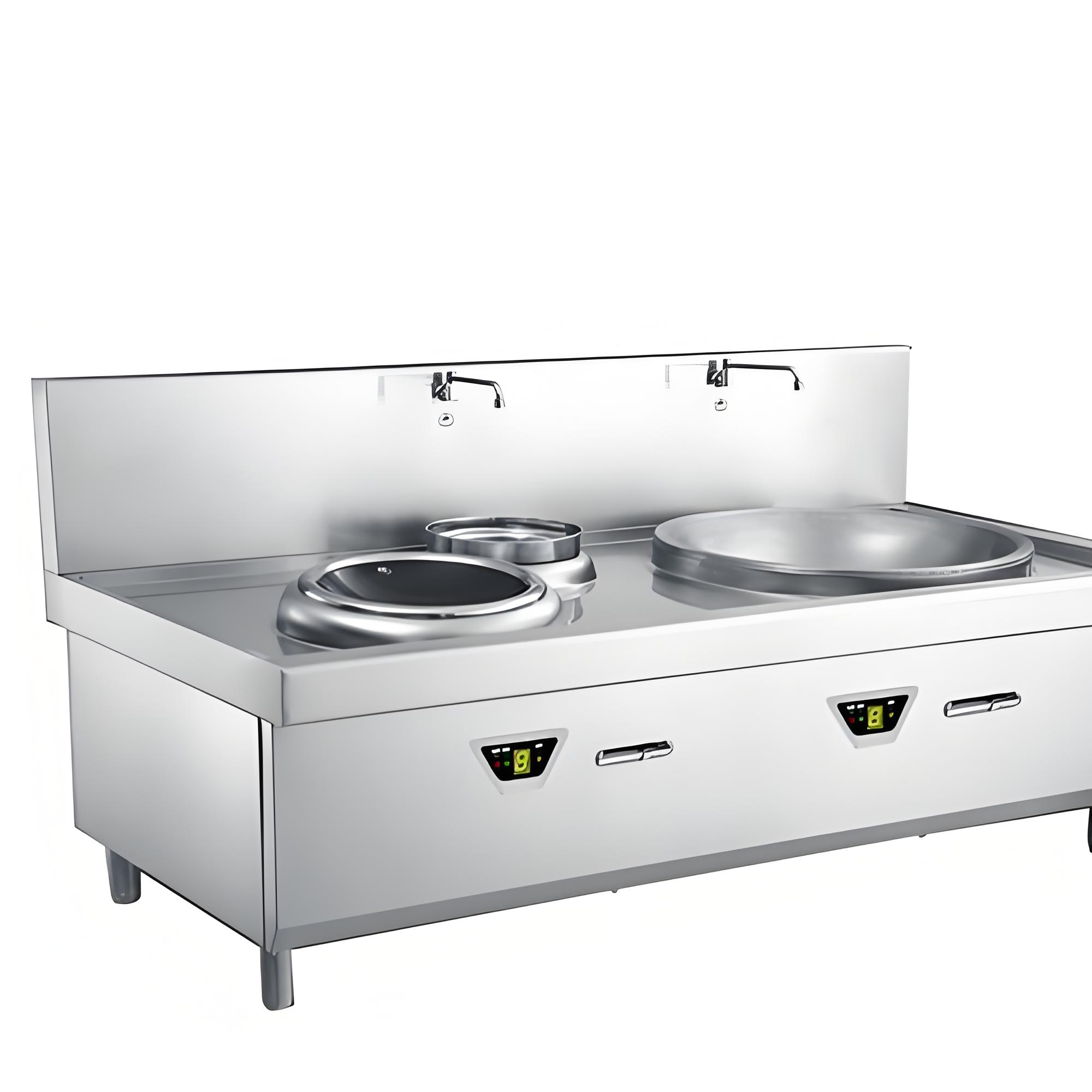Having spent over a decade working with commercial kitchen equipment, from bustling restaurant kitchens to catering setups, I’ve seen my fair share of appliance quirks and safety concerns. One issue that keeps popping up, especially with high-powered gear like commercial induction cookers, is a hot power cord. If you’ve noticed your induction cooker’s power cord getting warm—or worse, uncomfortably hot—you’re probably wondering whether it’s still safe to use. I’ve been there, troubleshooting this exact problem in busy kitchens, and I’m here to share what I’ve learned. Let’s dive into why this happens, whether it’s a red flag, and how to handle it safely, drawing on my years of hands-on experience.

Why Does the Power Cord Get Hot?
A hot power cord on a commercial induction cooker can set off alarm bells, and for good reason. These appliances are power-hungry, often pulling 2000–3500 watts, which puts significant demand on their electrical components. In my time working with kitchen equipment suppliers, I’ve identified several reasons why a power cord might heat up:
High Electrical Load: Commercial induction cookers draw a lot of current, especially when running at full power. This can naturally cause the cord to warm up, particularly if it’s not designed to handle the load.
Undersized or Damaged Cord: If the cord’s gauge (thickness) is too small for the cooker’s power requirements, it can overheat. I’ve seen cases where older units had worn or frayed cords that couldn’t cope with the current.
Poor Connections: Loose or corroded plug connections increase electrical resistance, generating heat. I once inspected a cooker in a cafe where a loose outlet connection was the culprit.
Environmental Factors: Cords placed near heat sources (like the cooker itself) or in poorly ventilated areas can absorb ambient heat, making them feel hotter than they should.
Overuse or Continuous Operation: Running the cooker at maximum power for extended periods can stress the cord, especially in high-volume kitchens.
Early in my career, I was called to a restaurant where the staff complained about a “burning smell” from their induction cooker. After inspecting, I found the power cord was scorching hot due to a mismatched plug and outlet. That experience taught me to take heating issues seriously, as they can escalate quickly if ignored.

Is a Hot Power Cord Safe?
Let’s address the big question: Can you keep using your induction cooker if the power cord is hot? The answer depends on the degree of heat and the underlying cause. A slightly warm cord during heavy use is often normal, as electrical current generates some heat. However, if the cord is hot to the touch, feels soft or melted, or emits a burning smell, it’s a potential hazard and should not be ignored. Overheating can lead to insulation damage, electrical shorts, or even fires—risks no kitchen can afford.
In my years of working with commercial kitchens, I’ve developed a rule of thumb: if you can’t comfortably hold the cord for a few seconds without it feeling too hot, it’s time to investigate. Ignoring this could lead to costly repairs or, worse, a safety incident. Let’s explore how to assess and address the issue.
Assessing the Situation: What to Check
Before deciding whether your cooker is safe to use, you need to pinpoint the cause of the heat. Here’s a step-by-step process I’ve used countless times on job sites to diagnose the problem:
Step 1: Inspect the Cord and Plug
Visual Check: Look for visible damage like fraying, cuts, or melted insulation. I once found a cord with exposed wires in a food truck—definitely not safe to use.
Feel the Temperature: Run the cooker at medium power for 10–15 minutes, then carefully touch the cord. Warm is okay; hot enough to burn is not.
Check the Plug: Ensure the plug is secure in the outlet with no wobbling or corrosion. A loose connection can generate significant heat.

Step 2: Verify the Power Rating
Check the cooker’s power requirements (usually listed on the unit or in the manual) and compare them to the cord’s specifications. Most commercial induction cookers require a 10–12 AWG (American Wire Gauge) cord to handle high current (15–30 amps). If the cord is thinner (e.g., 14 AWG), it’s likely undersized and prone to overheating.
Step 3: Examine the Outlet
The outlet itself can be a weak link. Ensure it’s rated for the cooker’s amperage (e.g., a 20-amp or 30-amp outlet for commercial units). I’ve seen kitchens use standard 15-amp outlets for high-powered cookers, leading to overheating and tripped breakers.
Step 4: Assess Usage Patterns
Are you running the cooker at full power for hours? Continuous high-heat operation can stress the cord. In one catering setup, I noticed the staff kept the induction cooker on high for entire events, causing the cord to heat up. Adjusting their workflow to give the unit breaks solved the issue.
Step 5: Check the Environment
Is the cord coiled tightly, placed near the cooker’s hot surface, or trapped in a confined space? Poor ventilation can trap heat. I once re-routed a cord away from a stove’s edge in a small kitchen, and the temperature dropped noticeably.
Comparison of Common Causes and Solutions
To make it easier to understand, here’s a table summarizing the common causes of a hot power cord and how to address them, based on my field experience:
|
Cause |
Symptoms |
Solution |
Safety Impact |
|---|---|---|---|
|
Undersized Cord |
Cord feels very hot, may soften |
Replace with thicker gauge cord |
High risk; stop using |
|
Damaged Cord/Plug |
Fraying, melting, or burn marks |
Replace cord or entire unit |
High risk; stop using |
|
Loose Outlet Connection |
Plug feels hot, wobbles in socket |
Tighten or replace outlet |
Moderate to high risk |
|
High Continuous Load |
Cord warms during long use |
Reduce power or allow cooldown |
Moderate risk if managed |
|
Poor Ventilation |
Cord hot near heat sources |
Reposition cord for better airflow |
Low to moderate risk |
This table reflects the patterns I’ve observed across various kitchens, from small cafes to large catering operations. Addressing the root cause is key to ensuring safety.
What to Do If the Cord Is Hot
If you’ve confirmed the cord is overheating, here’s how to proceed safely, based on my tried-and-true methods:
Immediate Actions
Unplug the Cooker: If the cord is uncomfortably hot, smells like burning plastic, or shows damage, unplug the unit immediately and stop using it until the issue is resolved.
Let It Cool: Allow the cord to cool down completely before handling. This prevents burns and gives you a clearer view of any damage.
Inspect Thoroughly: Check the cord, plug, and outlet for signs of wear, melting, or discoloration. If you see any, the unit is unsafe until repaired.

Long-Term Fixes
Replace the Cord: If the cord is undersized or damaged, contact the manufacturer for a replacement. I’ve worked with brands like Vollrath and Avantco, and most offer compatible cords. Ensure the new cord matches the cooker’s power rating (e.g., 10 AWG for 30 amps).
Upgrade the Outlet: If the outlet is outdated or underrated, hire a licensed electrician to install a heavy-duty outlet (e.g., NEMA 6-20 for 20 amps). This was a game-changer for a food truck I consulted for.
Adjust Usage: Avoid running the cooker at maximum power for extended periods. I recommend cycling between medium and high settings to reduce strain on the cord.
Improve Ventilation: Keep the cord away from heat sources and ensure it’s not coiled or trapped. I often use cable clips to keep cords organized and exposed to air.
Consult a Professional: If you’re unsure about the cord’s condition or the electrical setup, call an electrician or the manufacturer. I’ve seen too many kitchens try to “DIY” electrical fixes, only to create bigger problems.
When to Stop Using the Cooker
Some situations demand immediate action. Do not use the cooker if:
The cord feels soft, melted, or has visible burn marks.
You smell burning plastic or see smoke.
The plug or outlet is discolored or damaged.
The cooker trips breakers or causes flickering lights.
In these cases, the risk of fire or electrical shock is too high. I once advised a restaurant to replace a cooker after its cord showed burn marks—better safe than sorry.
A Personal Story: The Food Truck Fiasco
A few years back, I was brought in to troubleshoot a commercial induction cooker for a food truck that kept shutting off mid-service. The owner mentioned the cord was “pretty warm” but didn’t think much of it. When I checked, the cord was scorching, and the plug was loose in a worn-out outlet. The truck was pulling 25 amps through a 15-amp setup—a recipe for disaster. We replaced the outlet, installed a proper 10 AWG cord, and reorganized the setup to avoid heat buildup. The truck ran smoothly after that, and the owner avoided a potential fire. That experience cemented my belief that no overheating issue is too small to ignore.

Preventive Measures for Safe Operation
To keep your induction cooker’s power cord from overheating in the first place, here are some tips I’ve shared with countless kitchen managers:
Check Specifications: Before buying, ensure the cooker’s cord and plug are rated for its power draw. Most manuals list this info clearly.
Regular Inspections: Check the cord and plug monthly for wear, especially in high-use environments. I make this part of my routine equipment checks.
Use Dedicated Circuits: Plug the cooker into a dedicated outlet to avoid overloading shared circuits. I’ve seen kitchens overload circuits by plugging multiple appliances into one outlet.
Clean the Cord: Dust and grease can trap heat. Wipe the cord with a damp cloth (when unplugged) to keep it clean.
Replace Aging Units: If your cooker is old, its internal wiring may be degrading, causing the cord to heat up. I recommend replacing units over 5–7 years old if issues persist.
The Safety Angle: Why It’s Non-Negotiable
In my time in the industry, I’ve learned that electrical safety is paramount in commercial kitchens. According to the National Fire Protection Association, electrical issues are a leading cause of commercial kitchen fires. A hot power cord isn’t just an inconvenience—it’s a warning sign. Ignoring it could lead to equipment failure, injury, or worse. By addressing the issue promptly, you protect your staff, customers, and business.
Wrapping Up: Stay Safe, Cook Smart
A hot power cord on your commercial induction cooker isn’t something to brush off, but it doesn’t always mean the unit is doomed. By inspecting the cord, verifying the electrical setup, and taking corrective action, you can keep your kitchen running safely and efficiently. My years of troubleshooting have taught me that most overheating issues are fixable with the right approach—whether it’s replacing a cord, upgrading an outlet, or adjusting how you use the cooker.
Next time you fire up your induction cooker, take a moment to check the cord. A little vigilance goes a long way in preventing bigger problems. If you’re ever in doubt, don’t hesitate to consult an electrician or the manufacturer. Your kitchen deserves equipment that’s as reliable as your recipes.

Related Questions and Answers
Q: Is it normal for an induction cooker’s power cord to get warm?
A: A slightly warm cord during heavy use is normal due to the high electrical load. However, if it’s too hot to touch comfortably or shows signs of damage, stop using it and investigate.
Q: Can I replace the power cord myself?
A: If you’re experienced with electrical repairs, you can replace the cord with one that matches the cooker’s specifications. Otherwise, hire a professional to avoid safety risks.
Q: How do I know if my outlet is suitable for a commercial induction cooker?
A: Check the cooker’s manual for its amperage requirements (e.g., 20 or 30 amps). The outlet should match or exceed this rating, often a NEMA 6-20 or 6-30. An electrician can confirm.
Q: What if my cooker’s cord keeps overheating after repairs?
A: Persistent overheating may indicate internal wiring issues or an overloaded circuit. Stop using the unit and consult the manufacturer or an electrician for a thorough inspection.





